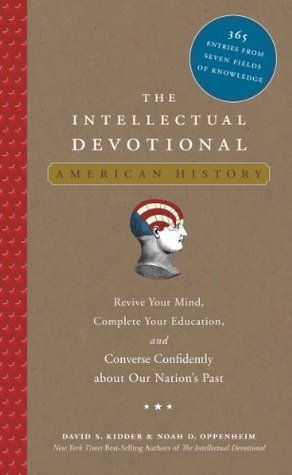More on this book
Kindle Notes & Highlights
Started reading
January 22, 2018
Later, in the mid-nineteenth century, leaders like Henry Clay (1777–1852) would revive Hamilton’s plan, renaming it the American System.
One of Hamilton’s policies, a tax on whiskey used to pay down debts from the Revolution, was so unpopular it sparked the Whiskey Rebellion.
mixture of foreign influences produced a famously cosmopolitan culture that has made New Orleans unlike any other city in the United States.
first book, Hobomok, published in 1824, a sympathetic novel about discrimination against American Indians.
Her most famous poem, “A Boy’s Thanksgiving,” written in the mid-1840s, is known for its opening lines: “Over the river, and through the wood, / to Grandfather’s house we go.”
championing equality for women, freed slaves, and American Indians,
work songs for sailors aboard whaling ships.
as for me, give me liberty or give me death!”
Henry led with equal vehemence the opposition to the United States Constitution, which he said reminded him too much of the hated British monarchy.
Hamilton convinced jurors that since the law was unjust, they should acquit Zenger despite the judge’s instructions.
memory of his trial helped inspire the First Amendment to the Constitution protecting free speech fifty years later.
The jurors depended on the controversial concept of “jury nullification,” by which juries can choose not to enforce laws they consider unjust, to acquit Zenger. Although rarely used, American juries still have this prerogative.
New York Stock Exchange (NYSE) on Wall Street surpassed European financial capitals
stock market crash of 1929 illustrated the devastating effects of stock downturns
Once upon a midnight dreary, while I pondered, weak and weary,
first American mystery writer and one of the inventors of the science fiction
died with thirty-eight cents in his pocket at a New York City hospital.
era before recorded music, composers like Foster made most of their income from the sale of sheet music.
style was heavily influenced by so-called plantation music,
In 1860, after the collapse of his marriage, he moved to New York City and promptly descended into alcoholism and poverty.
died at the age of thirty-seven in a public hospital
a leading financier of opposition to British rule in Massachusetts
Hancock became the first person to sign the Declaration of Independence in 1776.
Once the Revolution began, however, Hancock was sidelined by his comrades. Despite his undeniable dedication to the cause and his deep pockets, Hancock was not popular with his fellow revolutionaries, who tired of his pomposity.
Hancock graduated from Harvard and before that from Boston Latin School, the first public high school founded in the British colonies.
his soldiers often had little or no training, lacked uniforms, deserted regularly, and were accustomed to electing their own officers.
When he agreed to lead the Continental army in 1775, Washington declined a salary, asking only that Congress reimburse his expenses.
Most of the slaves had been kidnapped or taken prisoner by local chiefs during military struggles in western Africa, sold to European traders,
United States Congress outlawed the international slave trade in 1808,
Atlantic slave trade continued until 1888, when Brazil became the last American country to outlaw slavery.
domestic slave auctions continued in the United States until ...
This highlight has been truncated due to consecutive passage length restrictions.
Homelands for liberated slaves who wanted to return to Africa were established by the British in Sierra Leone in 1808 and by the Americans in Liberia in 1821.
The Erie Canal, which at the time of its construction was the most significant feat of engineering in United States history, made transportation drastically cheaper and faster,
connected the Great Lakes region with the Hudson River,
Many remnants of the original canal remain in upstate New York, and parts are still used for commercial shipping.
Originally, barges on the Erie Canal had no source of power and had to be pulled by horses or oxen that walked alongside the canal on a strip called a towpath.
Engineer Pierre L’Enfant (1754–1825) designed the blueprint for the nation’s capital,
L’Enfant traveled to America to enlist in the patriot army at age twentytwo,
He envisioned two great buildings, the Capitol and the White House, which would be physically separate to symbolize the concept of separation of powers that is enshrined in the Constitution. L’Enfant’s plan also called for a system of grand avenues, each of which would be named after a state in recognition of the importance of federalism.
Every state has an avenue in Washington, DC, named in its honor.
crucial role in encouraging the development of American fiction and poetry
transcendentalists—a movement with religious, literary, and philosophical dimensions—for the most part rejected organized religion in favor of a highly individualistic, optimistic view of the world and of human nature.
Emerson preferred to be called Waldo, rather than Ralph, by his friends.
Brady was among the first photographers to realize the journalistic potential of the primitive technology.
In 1862, Brady mounted his first exhibit of war photos, displaying a collection of pictures from the Battle of Antietam.
Brady’s business collapsed, and he died thirty years later after being hit by a streetcar in New York City.
also photographed several Confederate generals after the war, including Robert E. Lee
Although Britain was evolving into a parliamentary democracy in the eighteenth century, the hereditary king still wielded considerable power in the overseas colonies, and many Americans held King George personally responsible for the oppressive British policies that had driven them to rebellion.
went blind and insane in 1810 and was incapacitated for the last ten years of his reign.
King George’s great-great-great-great-granddaughter is Elizabeth II, the current queen of the United Kingdom.


